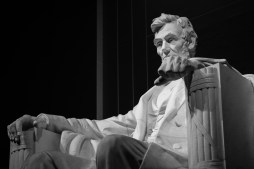Galileo Galilei vs. The Church: A Look at the Conflict Between Faith and Reason
The story of Galileo Galilei, the renowned Italian astronomer, physicist, and mathematician, is not just a tale of scientific discovery; it’s also one of the most significant conflicts between science and religion in history. This article delves into how Galileo’s groundbreaking ideas challenged the traditional views upheld by the Church during the early 17th century, igniting a fierce debate that resonates even today.
Who Was Galileo Galilei?
Galileo Galilei was born on February 15, 1564, in Pisa, Italy. Often referred to as the ‘father of modern observational astronomy’ and ‘father of modern physics,’ he made several revolutionary contributions to science. His innovations included improvements to the telescope and support for heliocentrism—the view that Earth revolves around the Sun—an idea initially proposed by Copernicus. Galileo’s dedication to empirical evidence laid foundational stones for future scientific inquiry.

The Scientific Revolution
Galileo’s work came at a time known as the Scientific Revolution—a period marked by dramatic shifts in thought regarding nature and cosmology. This era saw an increasing reliance on observation and experimentation rather than solely on philosophical reasoning or religious doctrine. Galileo’s findings about celestial bodies challenged long-held beliefs about their perfection and motion, which were deeply rooted in Aristotelian philosophy—an ideology that was supported by both scholars and religious authorities.
Conflict with The Catholic Church
Despite his contributions to science, Galileo found himself at odds with The Catholic Church. In 1616, church officials declared heliocentrism heretical because it contradicted Scripture as interpreted at that time. However, Galileo continued his advocacy for this model of our solar system in hopes of reconciling faith with reason. His publication “Dialogue Concerning the Two Chief World Systems” (1632) presented arguments for both geocentrism (the Earth-centered model) and heliocentrism but ultimately favored Copernican theory.
The Trial of Galileo
In 1633, after years of tension between him and church authorities over his teachings on heliocentrism, Galileo was tried by the Roman Inquisition. He was found guilty of heresy due to his promotion of ideas contrary to Catholic doctrine. As a result, he was forced to recant under threat of torture and spent much of his remaining life under house arrest—his works banned but secretly influencing many thinkers across Europe.
Legacy: Bridging Faith with Reason
Galileo’s legacy extends far beyond his conflict with The Church; he symbolizes a pivotal moment where faith confronted reason head-on. His insistence on observation changed how humanity perceives its place in the universe while highlighting tensions between scientific exploration and established belief systems—a conversation still relevant today among various fields such as theology, philosophy, and science.
In conclusion, Galileo Galilei’s battle against ecclesiastical authority not only altered humanity’s understanding of space but also opened up dialogues about faith versus reason that continue into contemporary discussions surrounding science ethics today.
This text was generated using a large language model, and select text has been reviewed and moderated for purposes such as readability.


